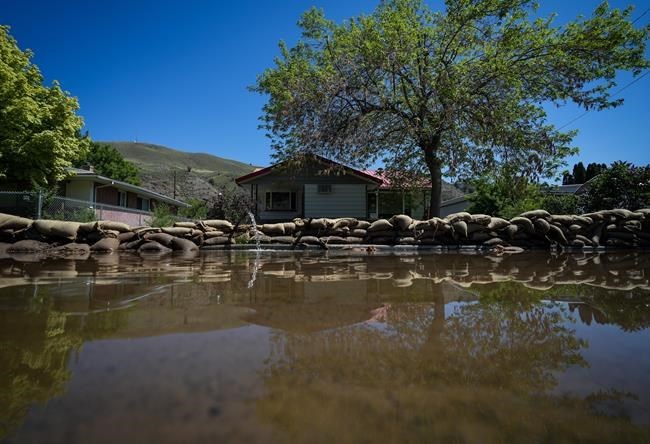As the spring season brings higher flood risk to Canadians, as seen in British Columbia recently, experts say many homeowners remain without adequate insurance to cover extreme weather’s damage to their homes.
“I would say that Canadians in general are not truly aware of the risks that their homes are exposed to, and the exposure they have to extreme weather events and the potential losses they could experience,” said Michelle Laidlaw, associate vice-president of The Co-operators Group Ltd.’s national product portfolio.
Flooding is the biggest under-insured climate risk in sa国际传媒, said Victor Adesanya, vice-president of insurance at DBRS Morningstar, especially during the spring thaw. IBC said more than 1.5 million households in sa国际传媒 are “highly exposed” to flood risk.
In comparison, as wildfires in Alberta have forced evacuations and filled the skies with smoke, the Insurance Bureau of sa国际传媒 said standard homeowner's insurance covers fire damage as well as the costs of mass evacuations.
Storm surge is another big under-insured risk, said Nadja Dreff, senior vice-president and head of Canadian insurance also at DBRS Morningstar. The Atlantic is at particularly high risk of storm surge, which tends to be in the aftermath of hurricanes or other such storms, said Adesanya.
The risks for these two events are only growing with climate change, said Dreff.
“There is very much a need for this coverage. And yet, we still haven't gotten to that level where we can say the insurance sector completely is able to cover all the risks,” she said.
IBC has said overland flood coverage for damage from overflowing bodies of water is generally only covered with an add-on to insurance plans. It may not even be available if you live in a known flood plain, it said.
Home and business insurance policies also don’t normally cover coastal flooding or storm surge flooding, IBC said, which means damage from rising water levels and waves caused by storms is generally not covered.
But some of the biggest damage can come from these kinds of events, as illustrated by hurricane Fiona, which hit homes in Atlantic sa国际传媒 last fall. According to the IBC, severe weather caused $3.1 billion in insured damage in sa国际传媒 in 2022, with Fiona costing $800 million.
“Incidents of extreme weather, including flooding, they've become more sudden, more frequent and more severe. And so what we're seeing is an increase in pricing, an increase in the cost of insurance for Canadians,” said Laidlaw.
Cooperators is the only insurance company that provides storm surge coverage for all Canadians, and not just those at lower risk, she said.
Right now, around 80 per cent of Cooperators’ clients are covered for storm surge, but there’s lower uptake in higher-risk areas, said Laidlaw. For example, she said only 60 per cent of Cooperators’ clients in Atlantic sa国际传媒 are covered for storm surge.
That might seem counter-intuitive, but it’s likely because insurance premiums are based on risk, said Laidlaw.
“Where we see the highest risk, you will also see the highest premium,” she said.
Laidlaw said it’s possible there will be an uptick in interest among higher-risk homeowners as they rebuild from Fiona’s damage, but that hasn’t happened yet.
Meanwhile, the federal government has promised to stand up a low-lost national flood insurance program, “aimed at protecting households at high risk of flooding and without access to adequate insurance.” The latest federal budget announced $31.7 million over three years for the creation of the program, beginning in 2023-24.
“They’re trying to fill a gap that’s existed for a while now,” said Adesanya, though it’s not yet clear what form the program will take.
There are programs in other countries that give insight into what kinds of models are possible, said Adesanya. For example, the U.S. national flood insurance program is government-driven, while in the U.K. it’s industry-driven, with risk shared across insurance companies, he said.
The federal budget said the program would include offering reinsurance through a federal Crown corporation as well as a separate insurance subsidy program.
IBC has been advocating for such a program, and said it is expected to help speed up recovery and rebuilding in flooded communities as well as reduce unplanned disaster costs for the federal government.
“Its implementation is the single most important step sa国际传媒 can take to better prepare for the impacts of climate change,” the organization said in a press release.
This report by The Canadian Press was first published May 26, 2023.
Rosa Saba, The Canadian Press

